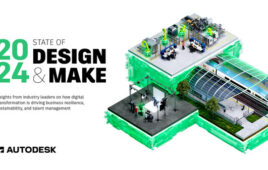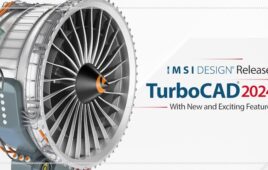Like CAD, computational fluid dynamics, or CFD, is moving toward (buzzword alert) democratization. Once the province of a subset of specialists, CFD is now reaching an ever-greater population of engineers.
But that change is happening slowly.
At many engineering companies, product designs—especially complex designs—are passed to experts CFD experts for detailed analysis and study of fluid and heat flow and mass transfer.
From its computational inception at the Los Alamos National Lab’s T3 group in the late 1950s, CFD analysis had been performed exclusively by specialized analysts who held Ph.D.’s in the subject and had devoted their careers to the discipline. But CFD has seen great change over the past 10 years, with a jump in the number of computer technologies available to all levels and types of engineers and to engineers at smaller companies have more access to CFD than in the past.
This is the first in a series of three blog posts that look at the trend. In future posts, we’ll look at an example of one company that is moving CFD studies further to the front end of its design cycle by instilling product designers and engineers with the knowledge and giving them the analysis tools to carry out CFD on their own designs. A third post talks about the future of CFD democratization, as that trend is expected to continue, just as it has with finite element analysis and with other types of computer-aided engineering technology.
CFD extracts the volume occupied by the fluid (which could include airflow) from the CAD model, then places a mesh over the volume by divides it into discrete cells. Next, the analyst defines boundary conditions by specifying the fluid behavior and properties at all boundary surfaces of the fluid. Analysts then simulate the fluids operating within the model, visualize the solution, and analyze issues.
If problems occur, that is, the the model doesn’t perform to product specifications, the analyst confers with engineers about needed changes.
Although CFD has been around since the 1960s, the engineering industry has barely democratized the use of CFD codes, according to Keith Hanna, director of product and marketing strategy at Mentor Graphics, a division of Siemens PLM. The company makes engineering analysis software.
Today’s CFD tools only reach about 10 percent of the audience that might benefit from the powerful predictive capabilities it offers, Hanna added. That’s because simulating fluid flow, heat and mass transfer isn’t as easy as it seems.

This CFD analysis of the design for a headlight was done in FloEFD from Mentor Graphics
“Dependent on the fluids being employed and the operating conditions inside a vessel, in the ‘real world’ without knowing the answer beforehand, all or some of many complex transport phenomena may be in play during its normal operation and one simply cannot easily know which will appear, and when, without some a priori knowledge of the application,” Hanna said.
Unlike other engineering technologies that have been made available to users at earlier stages of a product design lifecycle, such as analysis tools, a “democratic” CFD software tool is not a simpler version of a software tool already available today that employs hard-to-use “low-tech” CFD technology; it has to have actually a sophisticated “high-tech” approach to CFD that allows it to remove a CFD expert operating the CFD tool on behalf of a better “natural” CFD operator: a value-generating product development engineer, Hanna said.
To allow for more CFD to be done, to “democratize” the CFD process so smaller companies can perform these types of analysis, companies often employ apps that make the process repeatable, Hanna said.
Making general purpose CFD codes and tuning them to one or two application areas has been happening for some time, examples being electronics cooling, (examples include FloTherm and IcePak); HVAC (examples include FloVENT and AirPak); and turbomachinery (with examples including Numeca, CFTurbo, AxStream and MixSim), Hanna said.
Or, companies may use many more CPUs or cloud-deployed CFD to allow for companies to perform more CFD than they could in the past, Hanna added.
CFD is also becoming embedded within CAD tools to allow for simulation along with design, Hanna added. Mentor Graphics offers this with its suite of FloEFD tools embedded in all the major CAD packages, for example, he said.
“We believe the biggest impact on democratization will come from PLM-enabled CAD-embedded CFD, cloud deployment, and user experience being front and central to code design.
Filed Under: Software • 3D CAD, 3D CAD World





The increasing availability of commercial codes as listed by the writer does foster the democratization of CFD. CFD codes were first developed by finite volume methods e.g. Phoenix’s, Fluent. These codes require some experience to achieve stability and mesh accuracy ( linear approximation elements). In recent years finite element methods have been applied. These codes are easier to use and their elements provide better mesh accuracy control, common to all FEA.l